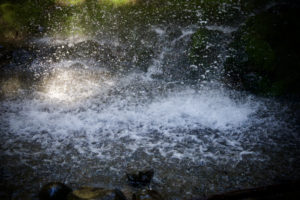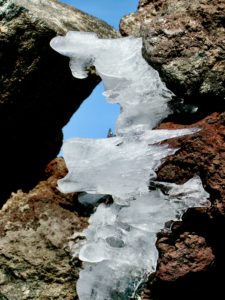What To Do When It Rains
If you spend a lot of time backpacking, sooner or later you will be rained on, but don’t let this dampen your spirit. Remember, it’s all part of the adventure. The rain will not ruin your trip if you have good equipment and you know what to do in inclement weather.
If it rains, except the fact that you are going to get wet. Focus on staying warm, not on staying dry, although, if you are dry it will be easier to stay warm, so try to stay as dry as possible. Good equipment is essential. A tent that will keep you dry at night, good rain gear that will keep you warm while you are hiking, and most important, a pack cover to keep your backpack dry.

Even if it barely starts to rain or the trees and bushes are wet, stop and put your pack cover on. This is of extreme importance. Do not let your backpack or its contents get wet, your life could depend on it.
When you are hiking in the rain there are two different ways of getting wet. First the obvious, from the outside in, as the rain water soaks through your layers of clothing until it reaches your skin. The other, is from the inside out. As you begin to sweat, you’re inside layer of clothing next to your skin will become wet; this is potentially more dangerous, because when you stop hiking you can quickly become chilled.
Try to adjust the layers of clothing that you are wearing under your rain gear to minimize the amount of sweating that you do. Keep in mind that it is OK to be warm because you are hiking, but be careful that you are not hiking to stay warm. If you are hiking to stay warm hypothermia can sneak up on you, and you will find yourself in a potentially life-threatening situation.
In some rare cases you can stay dryer by taking your rain jacket off. One cloudy day I went for a hike. I had only gone about a half mile when it started to rain, so I stopped and put my rain gear on. I soon became hot and started sweating. It was a light misty rain, so I decided to take my rain jacket off and wear my fleece sweater. The misty rain collected on the outside of the sweater, but did not soak in. My inner layer next to my skin stayed dry and I was very comfortable. After I got done hiking, I removed the sweater and shook the water off of it, then I put the sweater back on and it kept me warm. I enjoyed the hike and stayed dry the whole time.

It is important to consider what kind of clothing you are wearing. Will it wick water, will it keep you warm when it is wet and how quickly will your clothing dry? There are many different types of clothing made with material such as polyester, nylon, merino wool, spandex and others that are designed specifically for hiking and perform very well in wet conditions. A word of caution: NEVER USE COTTON. Not even you’re under wear. Cotton soaks up water like a sponge and once it gets wet it stays wet.
When you are hiking, you will need to take breaks. If your break is for any length of time like a lunch break; find a place out of the rain and change into some dry clothing so that you don’t get cold. Once your break is over, put your wet clothing back on and place your dry clothes back inside your backpack to keep them dry, then continue hiking. It is always uncomfortable to put cold wet clothes back on, but it is very important that you keep one set of dry clothing in your backpack.
Once you have reached your camp for the night, set up your tent and change into your dry clothes so that you don’t get cold. If you are able to have a campfire, you can dry your wet clothes over the fire, but be very careful not to burn them. If you cannot have a campfire, put your wet clothes back on when you go to bed, your sleeping bag will keep you warm and your body heat will dry your clothes during the night. In the morning you will have two sets of dry clothes to start the new day with.

Sometimes if it’s cold and rainy it’s better to not go anywhere. Take a zero day and stay warm and dry in your tent. Pull out a deck of cards or read a good book. Just relax, be safe and wait for the storm to pass.


